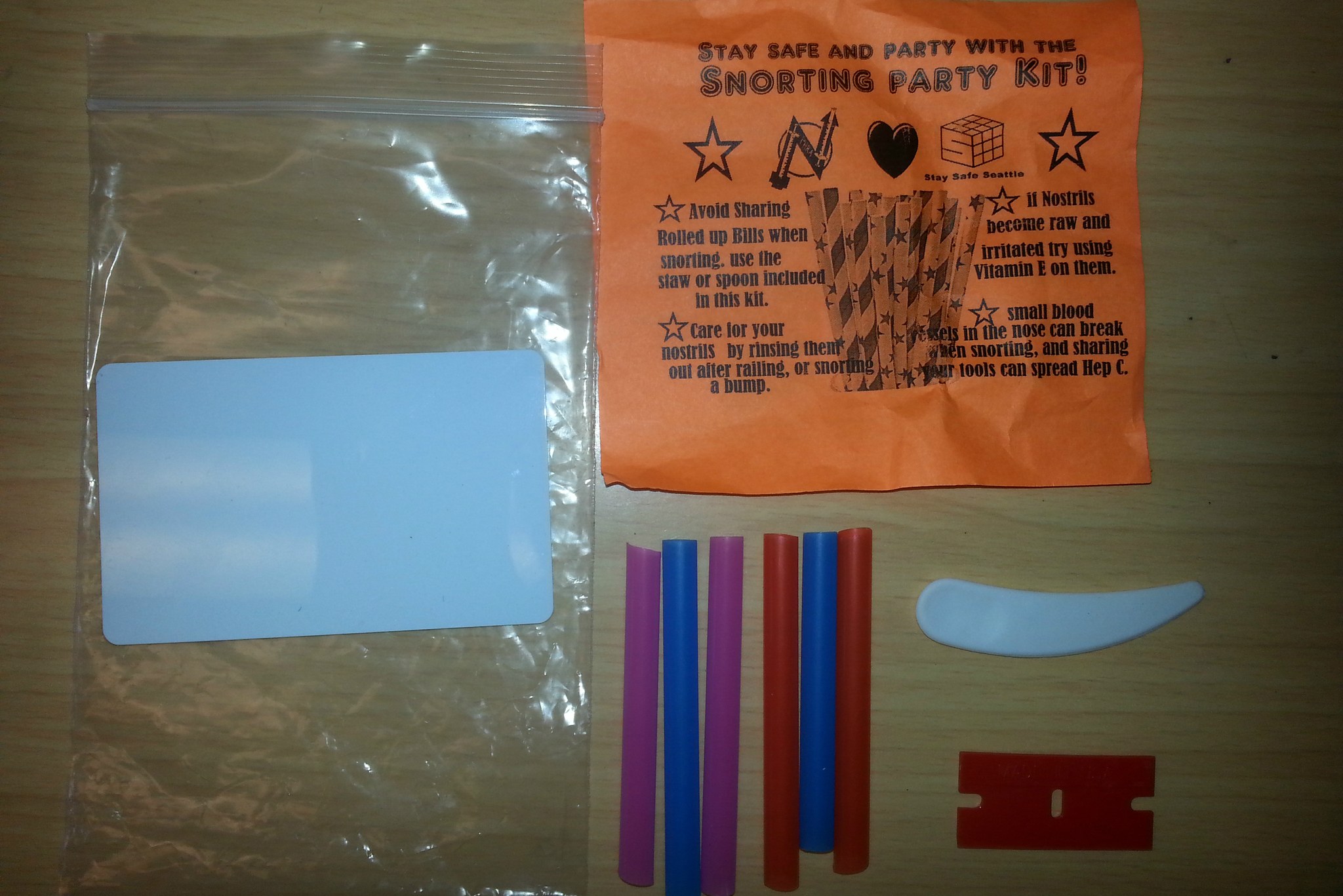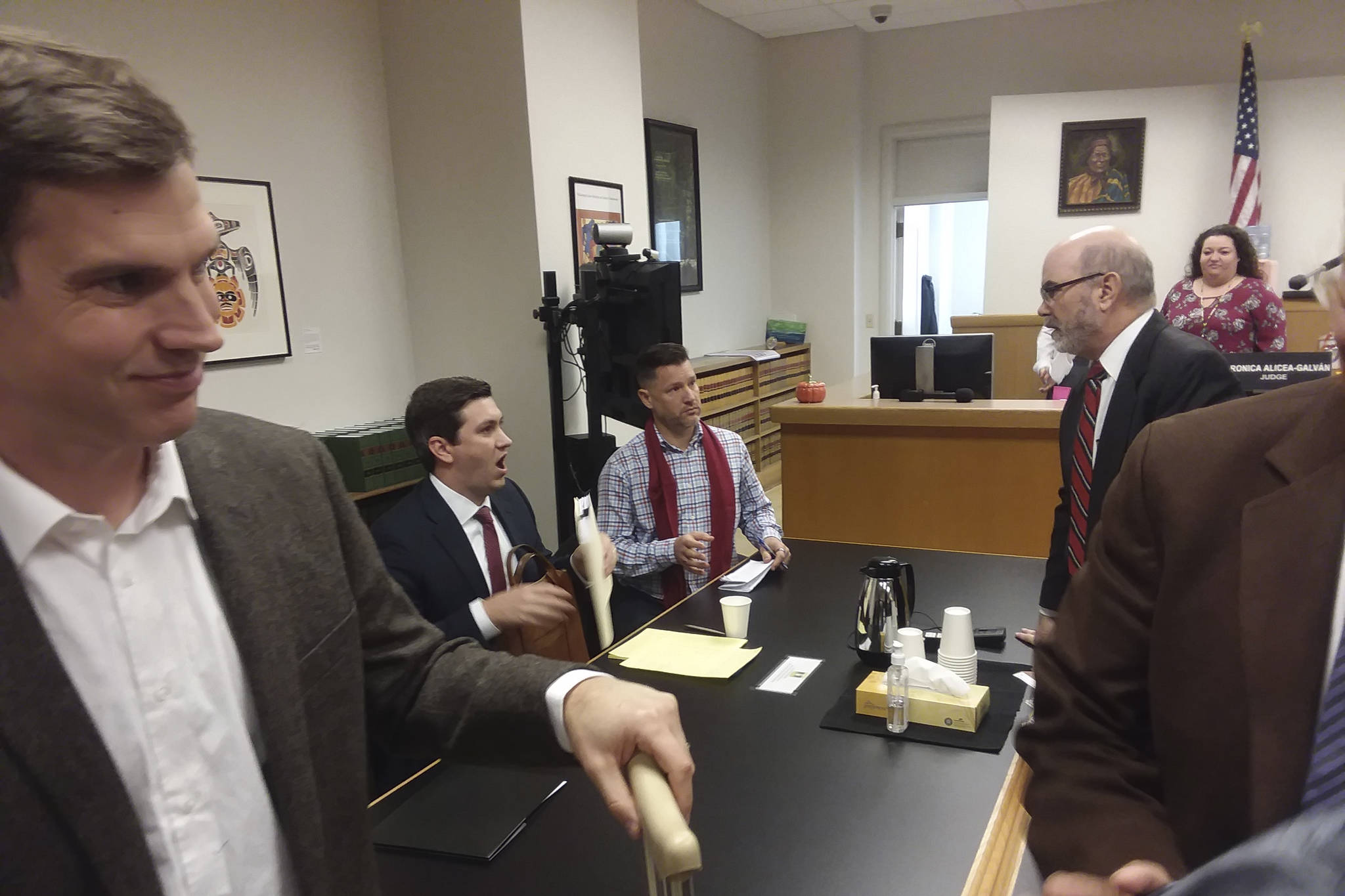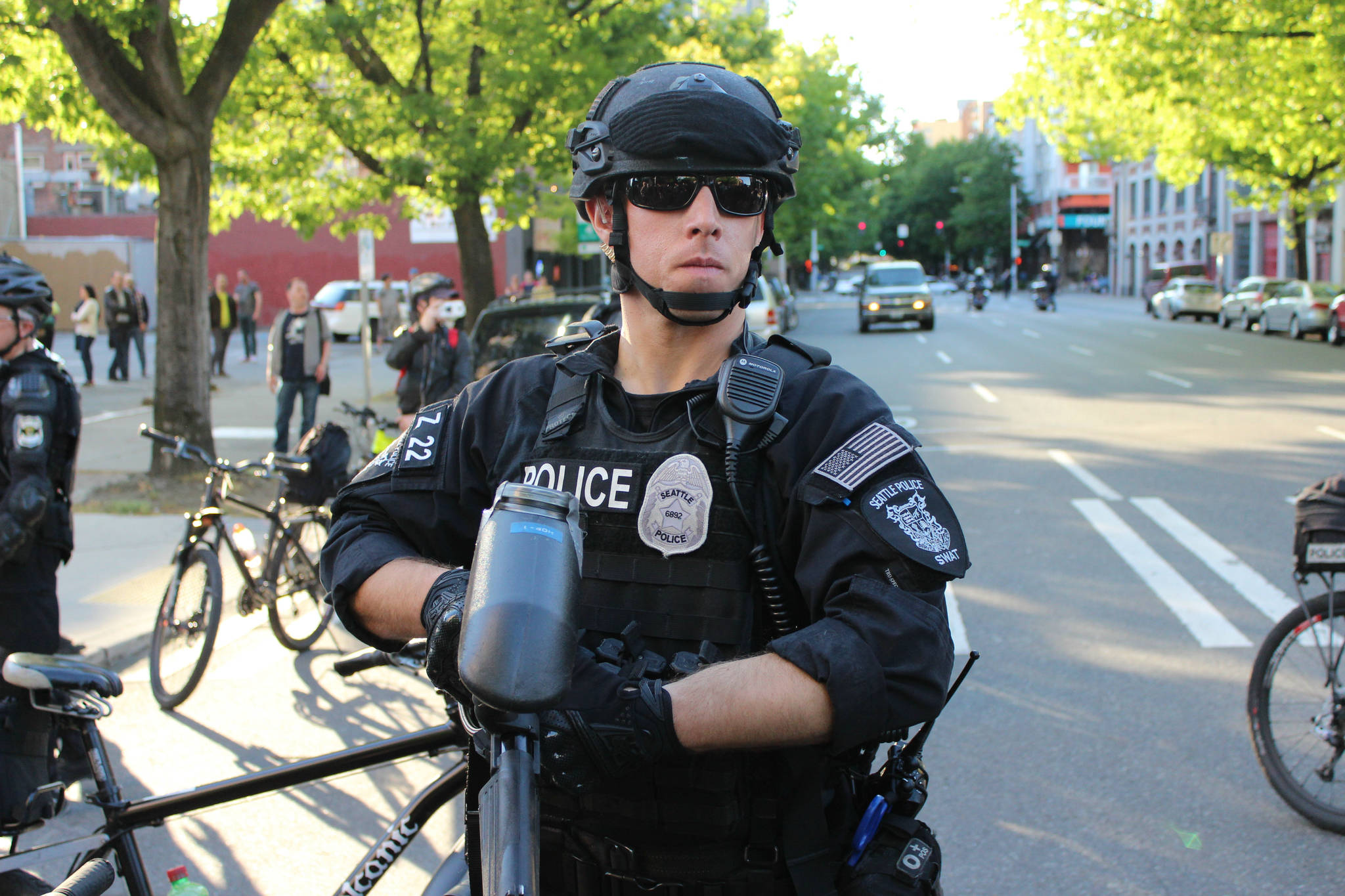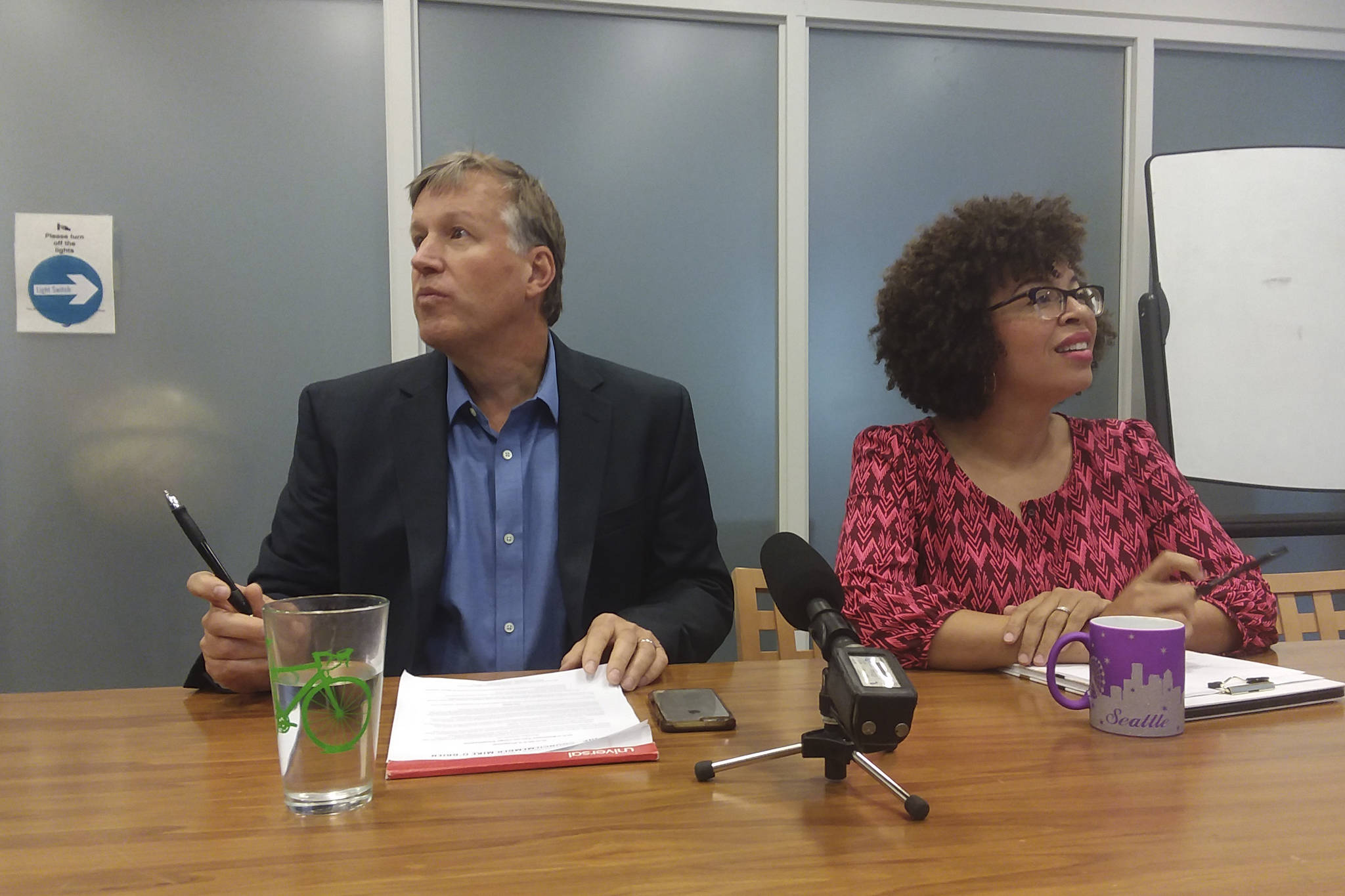The People’s Harm Reduction Alliance in the University District began as a needle exchange for injection drug users. When people share syringes, they spread disease, which hurts them and everyone else. To avert this, public health authorities distribute clean needles. This doesn’t necessarily reduce drug use, but it does reduce a lot of harm.
In 2010, the PHRA took that logic one step further when they began distributing crack pipes. Whereas needle exchanges exist primarily to stop HIV transmission, clean crack pipes are designed to stop the spread of hepatitis C. Last year, they added meth pipes to their catalogue.
This year, they’re coming for your nose.
“We started the snorting kits [at the beginning of this year] mainly because we’ve done smoking stuff, we’ve done injection stuff,” says PHRA director Shilo Murphy, but not snorting, even though it’s also a disease vector. Hepatitis C, says his colleague Lisa Al-Hakim, “transfers from people sharing straws or dollar bills because there’s blood vessels in your nose that pop. You can’t see the blood, but it’s in there.”
If you’ve never done cocaine or watched an R rated film, well, here’s how it works. First, you find a friend of a friend who’s a dealer and you buy a tiny baggie of what looks like bleached flour. You dump the contents onto a flat surface and chop it with a razor blade until all the clumps are gone. Use a credit card like a broom to arrange the powdery result into lines. Roll a dollar bill into a tube, stick one end in one of your nostrils, pin the other nostril closed with your finger, and hoover God’s dandruff up.
Dollar bills are, of course, extremly dirty, which adds to the risk of disease transmission. So Murphy and Al-Hakim chopped up some straws for snorters to use instead. “Our participants asked us for it,” says Murphy. “We have a lot of college kids who use our service…Not to call anybody out, but a lot of them who really asked for it were more connected to the frats and sororities.”
Each pack consists of a zip-locked plastic bag containing six straws of about three inches each. The straws are different colors to help keep them seperate. There’s a razor blade—a plastic one in the newer packs—to help chop up the coke so that clumps don’t get stuck in your nasal passage and eat away at the membranes. “The other thing that’s in there is kind of a blank credit card, just a piece of plastic, and that’s just a clean surface to to put whatever substances you might be snorting down on it so you’re not putting it on the back of a toilet or someplace where you can contract other strange things,” says Al-Hakim. “There’s also little tiny spoons for bumps”—that is, a single snort’s worth of coke, rather than a full line—“because people generally use their keys, which are also full of tons of germs.”
The kits cost the PHRA twenty five cents apiece and are distributed for free. Between April and September, the PRHA distributed 418 of them. They’re working with Stay Safe Seattle to distribute the kits.
Murphy says that the perception of cocaine as a “high class drug” is at odds with the epidemiological reality of drug use. “It’s about perception,” he says. “When we handed out crack pipes, the perception was that it was an African American drug. If you read the comments [on news articles covering the crack pipes], it refers to people as subhuman.
“You start talking about meth, which is steretypically a poor white drug, [and commenters] start talking about, ‘Oh, these people need help.’
“You start talking about snorting kits and people chuckle and laugh, like, ‘Oh, you can’t find a fucking straw?’” Murphy says. “People have these interesting perceptions of people’s needs and disease prevention by class and race…[but] everyone’s a poly drug user. Everyone’s doing more than one drug.”








